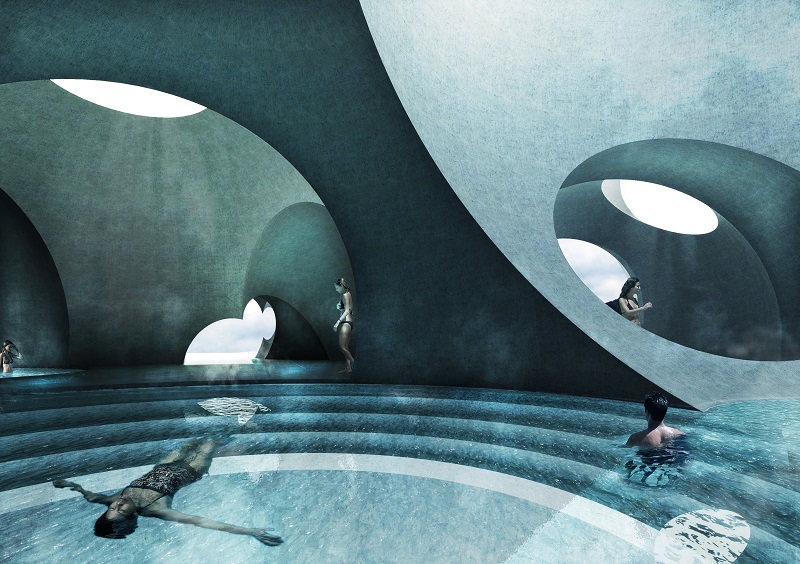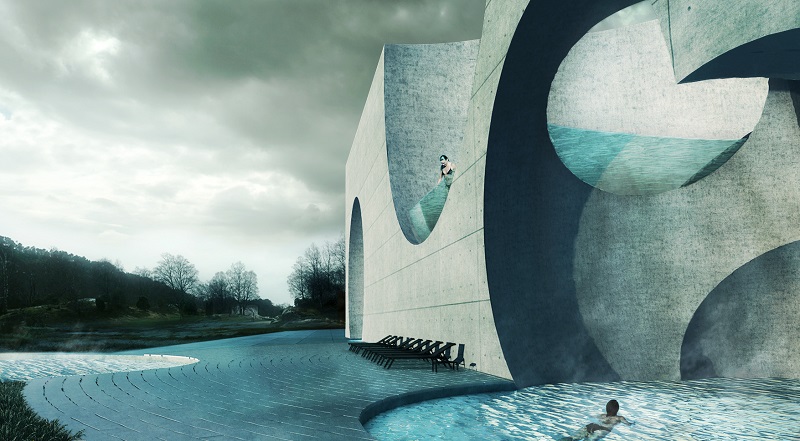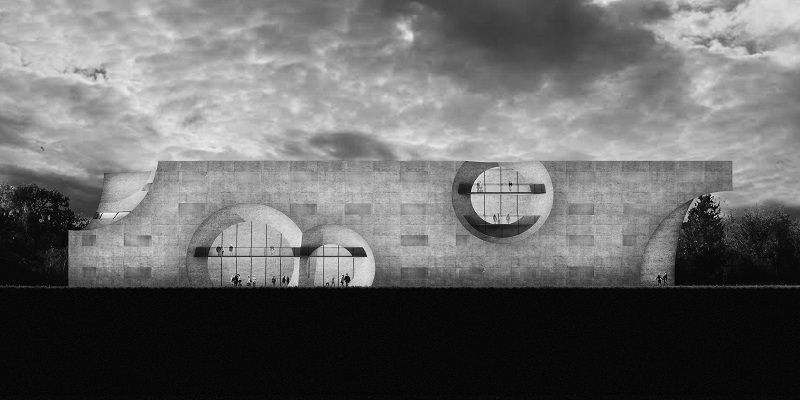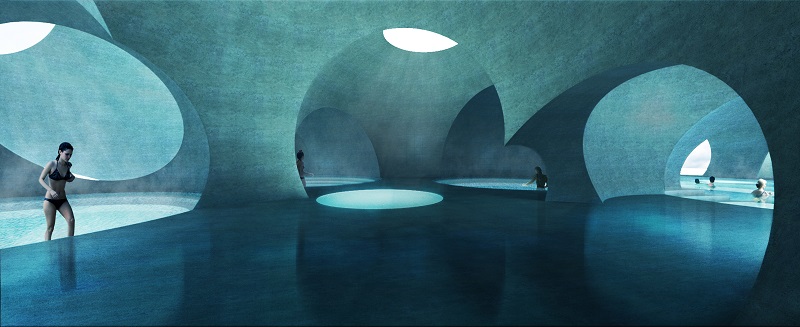Liepaja Thermal Bath
In January 2017, the design for Liepja Thermal Bath and Hotel was announced as the winner in the first annual AAP American Architecture Prize which recognises the most outstanding architecture worldwide.
Proposed for Liepja, Latvia, and designed by Steven Christensen Architecture of California, the inspiration arose from a keen interest in the formal associations of dome design in architectural history, and more precisely, its role within the typology of the public bath.
The architect highlights the dome as being ‘an important organisational and representational device’ throughout the history of the public bath. Originating in the technologically innovative Roman bathing structures, and progressing through the dim and atmospheric medieval Ottoman examples, the dome became a ubiquitous feature of the Renaissance and Baroque movements.
The design seeks to undermine the conventional symbolic performance of the hemisphere by challenging its centripetal tendencies as well as its hierarchical bias.
The architects proposed a multiplicity of domes, both upright and inverted, as a rhizomatic formal and organisational embodiment of a contemporary public that is democratic, horizontally empowered, and increasingly networked.
The AAP American Architecture Prize honours exceptional designs in 41 categories across three disciplines: architectural design, interior design, and landscape architecture. The firm’s design for Liepja Thermal Bath won a Silver Award for Recreational Architecture.
The design for Liepja Thermal Bath has also won a Gold Award at the IDA International Design Awards, an AZ Award and a People’s Choice Award from Azure Magazine, a Citation Award from the American Institute of Architects, and an American Architecture Award from the Chicago Athenaeum and the European Centre for Architecture, Art, Design and Urban Studies.
Content and images courtesy of Steven Christensen Architecture.
[edit] Find out more
[edit] Related articles on Designing Buildings Wiki
Featured articles and news
One of the most impressive Victorian architects. Book review.
RTPI leader to become new CIOB Chief Executive Officer
Dr Victoria Hills MRTPI, FICE to take over after Caroline Gumble’s departure.
Social and affordable housing, a long term plan for delivery
The “Delivering a Decade of Renewal for Social and Affordable Housing” strategy sets out future path.
A change to adoptive architecture
Effects of global weather warming on architectural detailing, material choice and human interaction.
The proposed publicly owned and backed subsidiary of Homes England, to facilitate new homes.
How big is the problem and what can we do to mitigate the effects?
Overheating guidance and tools for building designers
A number of cool guides to help with the heat.
The UK's Modern Industrial Strategy: A 10 year plan
Previous consultation criticism, current key elements and general support with some persisting reservations.
Building Safety Regulator reforms
New roles, new staff and a new fast track service pave the way for a single construction regulator.
Architectural Technologist CPDs and Communications
CIAT CPD… and how you can do it!
Cooling centres and cool spaces
Managing extreme heat in cities by directing the public to places for heat stress relief and water sources.
Winter gardens: A brief history and warm variations
Extending the season with glass in different forms and terms.
Restoring Great Yarmouth's Winter Gardens
Transforming one of the least sustainable constructions imaginable.
Construction Skills Mission Board launch sector drive
Newly formed government and industry collaboration set strategy for recruiting an additional 100,000 construction workers a year.
New Architects Code comes into effect in September 2025
ARB Architects Code of Conduct and Practice available with ongoing consultation regarding guidance.
Welsh Skills Body (Medr) launches ambitious plan
The new skills body brings together funding and regulation of tertiary education and research for the devolved nation.
Paul Gandy FCIOB announced as next CIOB President
Former Tilbury Douglas CEO takes helm.


























